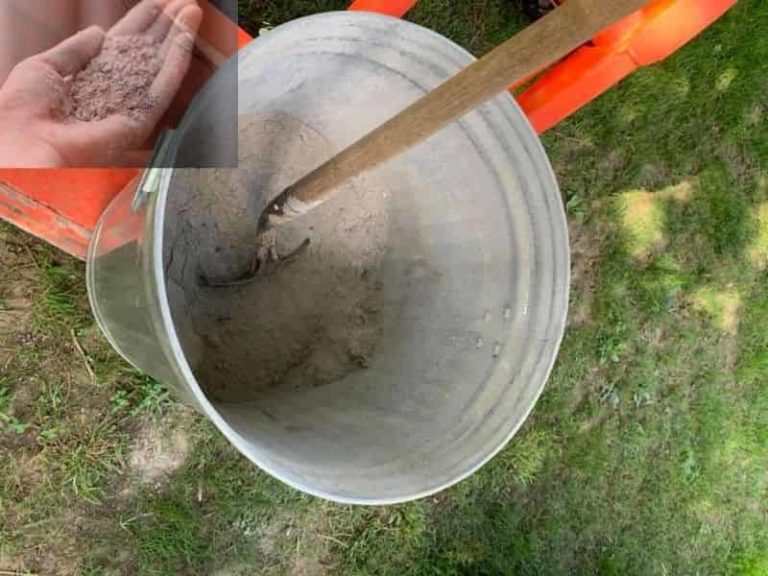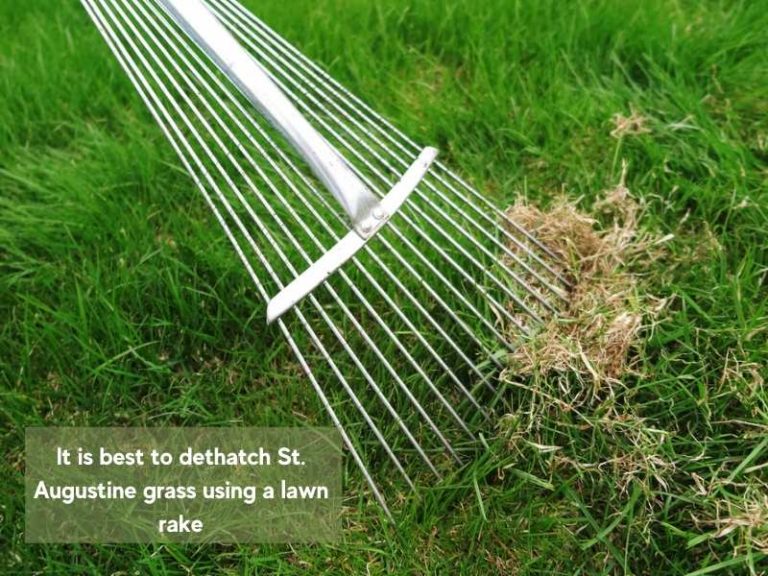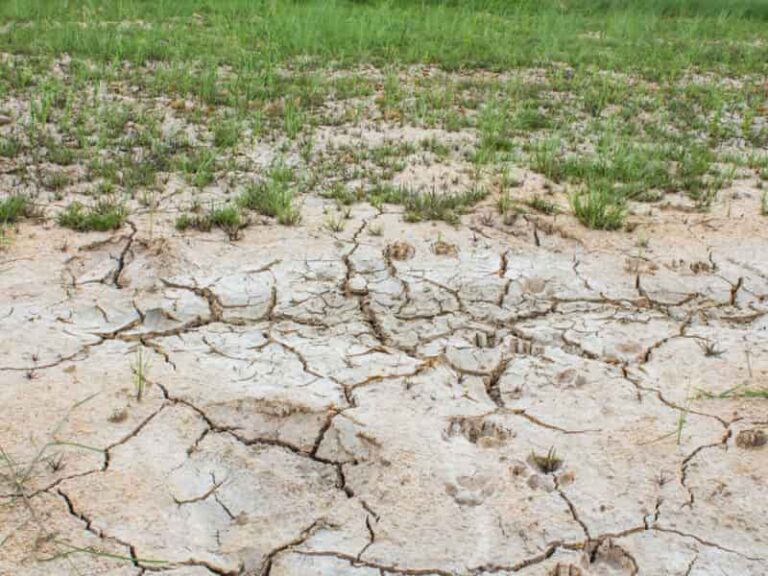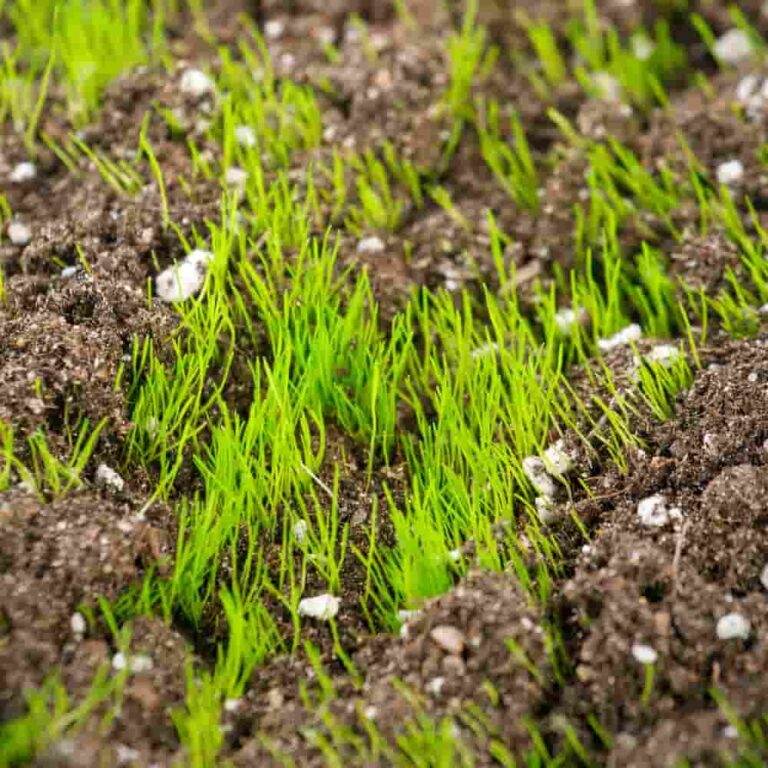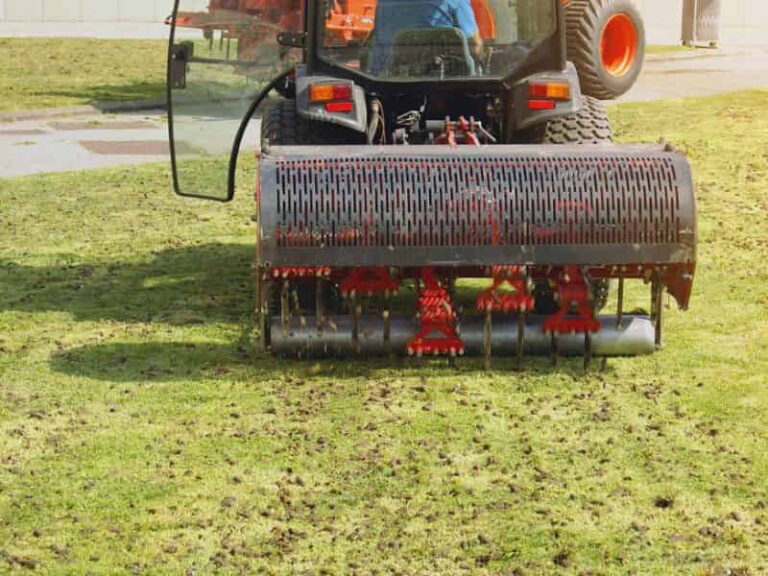Using Ammonium Sulfate for Lawns as Fertilizer
Lawns deficient in nitrogen will show signs such as yellowing, thinning, and slow growth. Ammonium sulfate contains 21% nitrogen, which makes it a good fertilizer for lawns. However, I would not advise that you apply it to any lawn without proper soil analysis because the sulfur content can alter the pH of the soil. So, how do you apply ammonium sulfate on your lawn?
Ammonium sulfate contains 21% nitrogen that will feed the grass and promote a thicker, greener turf. Analyze the soil in your lawn to determine the pH and nitrogen levels. Apply 1lb of ammonium sulfate per 1000 sq. ft. of the lawn during the active growth season of grass up to three times per year.
Caution: Ammonium sulfate contains 24% sulfur and can lower the pH of the soil significantly after multiple applications.
Is ammonium sulfate good for lawns?
Ammonium sulfate is a good lawn fertilizer because it contains nitrogen and sulfur that make the grass grow faster and turn greener. The 21% nitrogen content promotes a faster growth rate and helps the grass grow thicker. The sulfur content is also great if you want to lower the pH of the soil.
In instances of tired or dormant lawns, high soil pH (less alkaline soils), low density, thinner grasses, and yellowing turfgrasses, feeding the lawn with a good fertilizer such as Cesco Solutions Ammonium Sulfate will help fix the lawn.
How to apply ammonium sulfate to a lawn
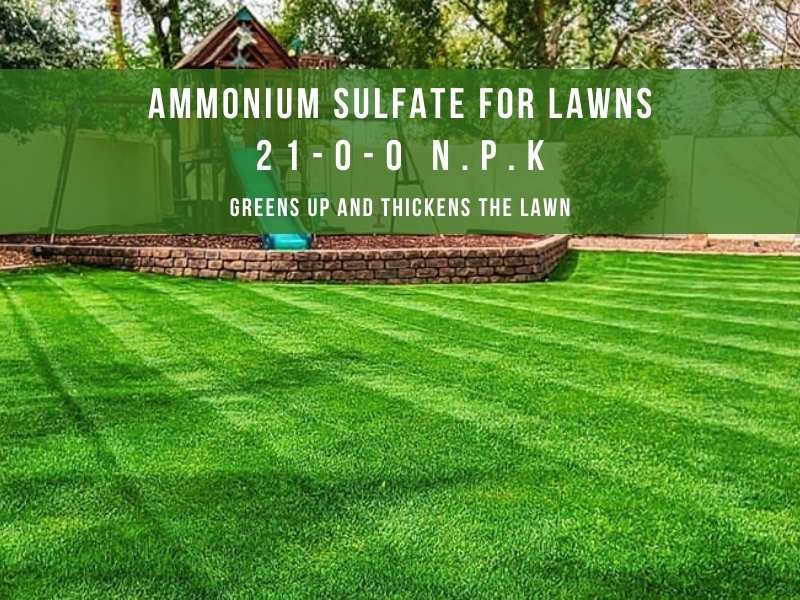
Ammonium sulfate is a white hygroscopic, soluble crystal fertilizer that’s dissolved in water before applying to lawns. To feed your lawn correctly, you want to determine the soil deficiency and the amount of fertilizer you need to apply.
Here’s how to apply ammonium sulfate to your lawn:
1. Analyze the soil for nutrient deficiencies
Soil analysis determines the number of minerals present to determine the ones that are deficient. Healthy lawns have the correct quantities of all the required minerals. Soil analysis also helps to verify the soil pH. If the soil pH is lower or higher than the recommended, apply commercial fertilizers to correct it.
Note: Ammonium sulfate has sulfur, which is useful for soils but lowers the soil pH, thus needs to be monitored.
2. Determine the type of grasses in the lawn
Knowing the type of grass in the lawn area helps determine the correct time to apply the fertilizer for best results. For example, Bermuda grass has high nitrogen requirements during spring and late summer because these are the times of the most active growth.
3. Determine the time of application
For best results, apply ammonium sulfate at the right time, depending on the type of grass on your lawn.
4. Measure the lawn area
The lawn area will help you determine the quantity of fertilizer to buy and how much you will spend when purchasing it.
5. Choose your fertilizer based on the soil analysis report.
There are lawn fertilizers and general fertilizers used for other plants. Lawn fertilizers are used for the grass on the lawn as they don’t damage the grasses. Some lawn fertilizers release nutrients slowly hence feeding the grass for a long time. Choose fertilizer according to the status of your lawn and the soil analysis report.
6. Gather your equipment and ingredients
After determining all the features, the next process is gathering all your equipment:
- Tank sprinkler or rotary
- Ammonium sulfate fertilizer
- Measuring spoon
- Water
7. Sprinkle the ammonium sulfate on your lawn
After conducting soil analysis, and gathering your equipment, start applying ammonium sulfate on your lawn. The following steps will guide you:
Add 1 lb of ammonium sulfate to 5 gallons of water in a tank sprayer. Wait for about 3 minutes for the crystals to dissolve entirely in the water. Apply the fertilizer solution at a rate of 1 lb per 1000 sq. ft. of lawn then water the area for about 10-15 minutes to prevent the grass from burning.
Precautions
- Avoid spraying the fertilizer on windy days as it may fall on nearby structures such as driveways. This will cause runoff to the drainage systems when it rains, resulting in damages.
- Don’t apply more fertilizer than the recommended amount to avoid burning the grass.
- Use a rotary sprinkler instead of a tank sprinkler for accuracy. A rotary ensures a uniform fertilizer spread in the lawn as it rotates in both clockwise and anticlockwise directions.
When to use ammonium sulfate fertilizer
The best time to apply ammonium sulfate fertilizer for cold season grasses is late summer to early fall. For warm-season grasses, apply ammonium sulfate fertilizer in the spring and fall.
Applying ammonium sulfate on cold season grasses during summer to early fall enables them to recover from summer. The grasses become greener, their shoot density increases, and it prepares them for the winter season. For cold season grasses, avoid applying any fertilizer during winter because most grasses become dormant in winter.
For warm-season grasses, apply ammonium sulfate fertilizer in spring and fall for the best results. Use the fertilizer six weeks before the onset of the first frost.
Frequency of application
The frequency of application of ammonium sulfate depends on the maintenance level of the lawn. Here’s the frequency of application depending on the maintenance levels:
- Low maintenance cold season grasses (established grasses): Apply ammonium sulfate 1-3 times annually. This is in early spring, through early autumn to late autumn.
- Moderate maintenance cold season grasses: Fertilized 2 to 4 times annually. This is early spring, mid-spring, early, and late Autumn.
- High maintenance cold season grasses (established grasses): Apply ammonium sulfate 3-5 times yearly throughout the seasons.
- Low maintenance warm season lawns: Apply the fertilizer 1- 2 times annually during spring and fall.
- Moderate and high care warm-season grasses: Apply ammonium sulfate fertilizer between 2 times to 5 times annually, depending on the type of warm-season grass on the lawn.
Benefits of ammonium sulfate on grass
Unhealthy, malnourished grasses on lawns are ugly. Sometimes your lawn might be healthy but not as green as you would want it to be. Adding ammonium sulfate fertilizer changes and density of the grass, making it more pleasing. There are even more benefits to adding this fertilizer to your lawn.
Here are the benefits of ammonium sulfate on lawns:
1. It makes the grass greener
Nitrogen in ammonium sulfate is a chlorophyll component, and chlorophyll is responsible for the green color of the grass. Also, ammonium sulfate has Sulphur, which prevents chlorosis in the grass.
Nitrogen sulfate fertilizer releases nitrates into the soil, which are then absorbed by the root nodules. The phloem tissues transport these nitrates to the leaves. If you supply high amounts of nitrogen to grass in the form of fertilizer, the leaves will form more chlorophyll, making the grass greener.
Additionally, applying ammonium sulfate will help your lawn recover from yellowing or simply make it appear greener than it was before.
2. It improves resistance to pests and diseases
Unhealthy lawns lack essential mineral salts making them malnourished and susceptible to pests and diseases. Nitrogen, carbon, oxygen, and hydrogen are macronutrients in lawns required in large quantities for healthy growth and development.
Ammonium sulfate has both nitrogen and sulfur nutrients that plants require for healthy development. Lawns with these elements can withstand cold, heat, and other environmental stresses better than those deficient in them.
3. Ammonium sulfate makes grass grow faster
Turfgrasses” shoots with low nitrogen supply grow at a slow rate. But if you apply ammonium sulfate, their shoots will grow faster because the fertilizer has nitrogen. Nitrogen is a component of amino acids, enzymes, and proteins, which is why it helps grass grow and spread faster.
4. It improves turf density
Thin lawns are characterized by a low number of leaves and shoots in an area in the turf typically caused by low or poor quality nitrogen supply. Thinning and low turf density can be fixed by applying ammonium sulfate as fertilizer.
The nitrogen in the fertilizer becomes available to the grass and helps increase shoot and leaf growth in the lawn. The result is a thick and dense lawn.
Grasses with more nitrogen supply from fertilizers are generally denser than ones with low or nitrogen deficiency. Healthy lawns are dark green in color, thick, and full. But, the grass can begin to turn yellow, thin, and the soil beneath is exposed. These are signs something is wrong, most notably, nutrient deficiency. Such unhealthy lawns can be fixed using ammonium sulfate fertilizer.
References
- PennState Extension: Turfgrass Fertilization: A Basic Guide for Professional Turfgrass Managers.
- University of California Agriculture & Natural Resources: The UC Guide to Healthy Lawns.

